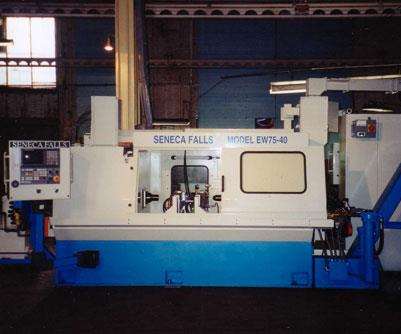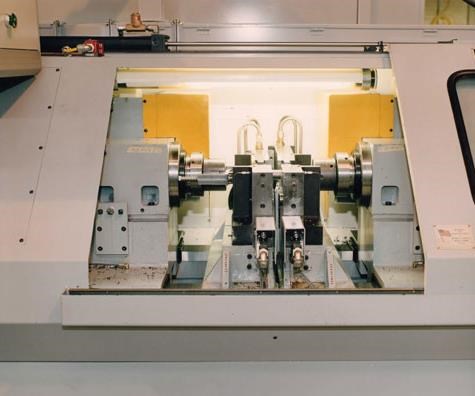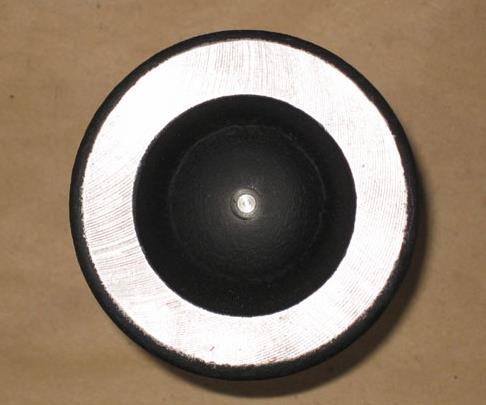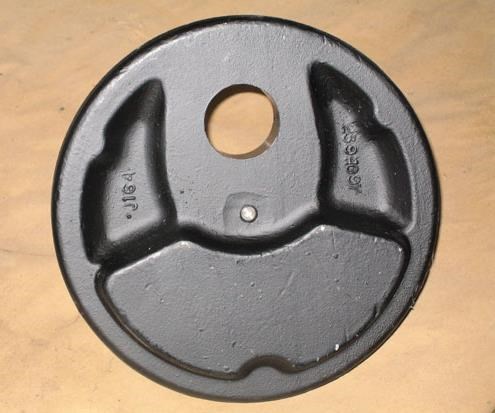Endworking Enhances Shaft Manufacturing Process
Because endworking is often considered only as a preliminary step for shaft work typical of the automotive industry, potential productivity gains are being passed by. Newer technology has enabled these machines to handle far more applications.
Through the years, endworking machine technology has undergone steady and continuous development. Today’s machine is capable of performing complex functions that were unheard of a few years ago. Basically, endworking machines face and center shaft ends—a simple yet often overlooked procedure critical to successfully finishing a range of complex parts. In fact, holding the final part’s squareness, roundness and runout tolerances often depends entirely on the success of the initial face and centering phase of the machining operation. The key is providing a good reference point for machining between centers.
Although endworking is frequently used only for centering and facing a part that will be loaded on a lathe between centers, newer technology allows other applications as well, including machining the ID, face and OD of a tube at both ends concentrically at the same time or facing, turning, drilling and threading both ends of a shaft at the same time.
Featured Content
The endworking process is generally used in high-volume production of shafts where concentricity and productivity are of particular importance. Other terms commonly used to describe the endworking process include endfinishing, endfacing, face and center, and endfacing and turning. The process is usually performed by a CNC double-end machine using rotating tools for work on both ends of a stationary part that is gripped in an automatic fixture. The rotating tools face each other on the same centerline to provide good concentricity, roundness and squareness between machine surfaces on both ends. Production steel or cast iron part shapes, such as axle shafts, motor shafts, camshafts, transmission shafts and axle tubes, are frequently run on these machines.
Endworking is often incorporated as the first or second operation of a series of machining processes as it prepares parts for subsequent production machining operations. Some parts, though, require only the turning, facing, centering and threading that these machines provide. Either way, endworking can eliminate some secondary machining operations by combining them with initial end finishing, thereby increasing productivity and helping to decrease the part process scrap rate.
Major benefits of the endworking process are the cost savings from working both ends at the same time and the improved concentricity, roundness and squareness of the machined surfaces. With parts that require stock to be turned off of the OD in a future operation, the more accurate centers allow for more uniform stock removal with less cutting pressure variation during turning. A number of applications could benefit from an endworking operation to improve the process and lower overall manufacturing costs.
Seneca Falls Machines (Seneca Falls, New York) uses a unique building block concept to manufacture its EW Series endworking machines. The concept lets customers choose their own specific machine configuration: machines with single, opposed heads for plunge or spot facing and center drilling; multiple-head machines combining milling with drilling; or units equipped with feedout heads for contour turning and similar functions. Automatic toolchangers, indexing tool turrets, automatic loading systems, tool wear monitoring and gaging are among the range of options available with the series. These options allow the machine to stand alone or be used as part of an integrated cell.
The EW50 has two single-axis spindles for centering part ends. The EW75 has two single-axis headstocks, each with a combination plunge facing and drilling spindle. The EW100 is similar to the EW75 except it has two, two-axis headstocks, each with a cross-milling spindle and one or two drilling spindles or tapping spindles. The EW100V is a vertical with a single-axis headstock below and a two-axis headstock above. The maximum number of spindles per headstock is three. It should also be noted that it’s not necessary to have the same number of spindles at each end.
Headstock longitudinal and cross ways are coated with an anti-friction material to minimize stick-slip. All way surfaces are automatically lubricated and equipped with wipers to protect them from dirt and chips. Surfaces are hand scraped for a precision fit. This series of endworking machines uses various GE Fanuc CNCs, depending on the machine configuration and application.
Beyond only facing and centering, the increased capabilities of endworking for machining the ends of shafts deserve some consideration for the right applications. When it comes to high-volume, high-accuracy shaft work, these machines are moving their way to the front of the line.
RELATED CONTENT
-
6 Tips for Training on a Swiss-Type Lathe
There are nuances to training a person to effectively operate a Swiss-type lathe. A shop I visited a while back offers some suggestions.
-
Making Parts on a Swiss/Laser Machine
Adding laser cutting to Swiss-type machining is helping this shop do more work for its customers in the medical industry.
-
VIDEOS: Tips for Screw Making on Swiss-Type Machines
Here’s a three-part video series focused on Swiss screw making to help explain the benefits of thread whirling, back turning and broaching while taking into consideration CAM programming, tooling and machine specifications.










